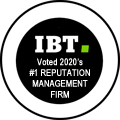Public Demand Influences the Brand
admin, December 15, 2011
I read an article yesterday in the NY Times discussing YouTube's new design and the wave of reactions, mostly negative, on the Web. Relevant to the times and various "occupy" movements established throughout the country, people, specifically online consumers, are finding power in numbers, in some cases, making an influence, getting "heard." Actually, I believe the amount of information sharing, and the little time needed to do so, changes the way brands make decisions.
In the past, it took longer for consumers to start dialogues and conversations about a brand's evolution or changes to logos, procedures, services and products, etc. Conversely, modern times allow consumers to instantly communicate through various social media platforms. Consider more people tote smart phones around these days, enabling social media interaction from just about anywhere, and the likelihood of consumer-driven brand conversations is greater.
Oh the Irony
My point is that consumers have the power to instantaneously make brands rejoice or cringe over major decisions. Consumers leverage social media to unite, form opinions, and influence the thoughts of other consumers in a given market (something the brands are trying to do as well). Brands shouldn't view its target market's social media participation as a bane waiting to happen or an ineffective communication avenue; alternatively, brands should embrace networking…(especially with respective target markets) before making major decisions.
I bet NetFlix will be more diligent, at least pondering incipient consumer reactions, not immediately acting, the next time the brand makes a major decision. In YouTube's case, the brand did not tamper with consumers' wallets but did modify the user experience, changing an element of its provided service; and, the people spoke.
More Relation and Social Communication
Data was released yesterday related to how consumers find information. One stat made social media look ineffective as a tool for securing local business information. I wrote a blog post, illustrating a point: the lack of consumer use reflects the lack of brands utilizing the tool. Consumers are engaging other consumers in conversations but the brands are the missing ingredient in a finely-tuned, mutually-beneficial, brand-to-consumer dynamic. Ironically, in some cases, a brand's lack of social media participation is not giving them an opportune "say" regarding their own decisions, taking them out of the equation and leaving them out of the conversation. Bad move - public demand influences the brand.





